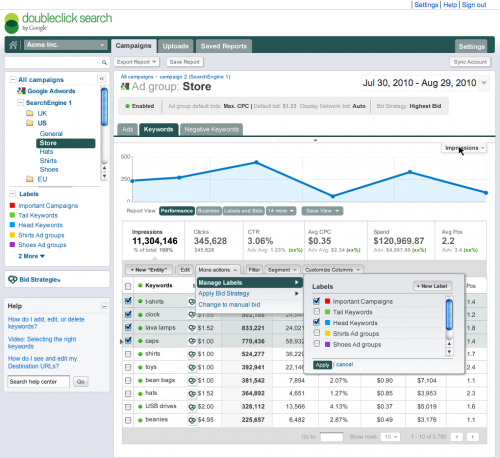DoubleClick Updates Somewhat Neglected Search Management Tool
DoubleClick today is unveiling DoubleClick for Search version 3, only the third major update in the campaign management tool’s five year history. According to the product’s manager, the move signals the Google division’s renewed commitment to the tool, which ties search in with the core display DoubleClick for Advertisers product. “We talk to customers a […]
DoubleClick today is unveiling DoubleClick for Search version 3, only the third major update in the campaign management tool’s five year history. According to the product’s manager, the move signals the Google division’s renewed commitment to the tool, which ties search in with the core display DoubleClick for Advertisers product.
“We talk to customers a lot, and, over time, it became clear that we have not invested enough in this project,” acknowledged Ariel Bardin, lead product manager for DoubleClick for Search (DFS), adding that the company would now give “significant focus” to the product.
Bardin told me that the previous version of DFS “felt more like web 1.0,” and said the company built the new iteration from scratch, using the Google technology stack. Now the interface looks more like AdSense, but it allows large agencies and advertisers to manage their search campaigns across Yahoo and Bing, as well as on Google. Bardin says the company hopes to eventually add international search engines, and will consider adding social networks if it sees interest from customers.
The changes in version 3 focus on improving workflow, reporting and functionality. In the workflow arena, the tool now will let agencies upload campaigns in spreadsheets with up to a million rows and manage campaigns globally. Users can also go into the AdWords or AdCenter interfaces directly, and make changes that are then synched back with DFS — previously the synch was only one way.
Reports now include more powerful filters and labels, and reporting that integrates with DFA. Optimization capabilities now include the ability to optimize to a certain position or optimize by a certain cost-per-acquisition goal, or some combination of both.
Importantly, all of the data is synched every half hour with the new version. Previously, they only pulled back data from the search engines once a day.
The product is priced based on DoubleClick getting a percentage of media spend.
Related stories
New on Search Engine Land
